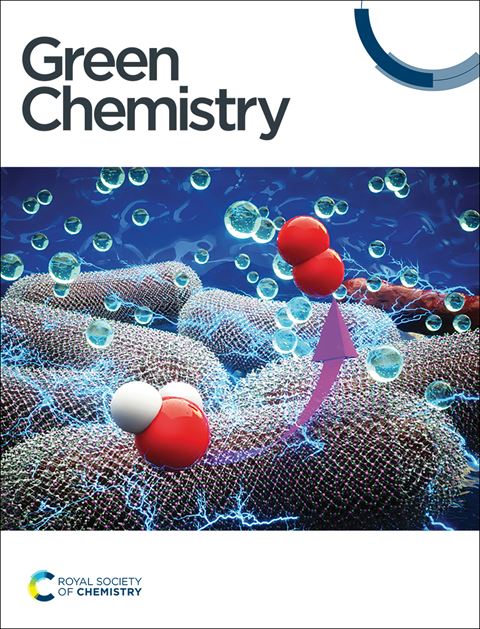Green solvents in hydroformylation-based processes and other carbonylation reactions
IF 9.3
1区 化学
Q1 CHEMISTRY, MULTIDISCIPLINARY
引用次数: 0
Abstract
Carbonylations are an important class of reactions that involve the addition of carbon monoxide (CO) to organic substrates in the presence of nucleophiles, leading to the formation of carbonyl-containing compounds. Despite its security issues, CO is a cheap feedstock, widely used in the chemical industry, that can be produced by sustainable processes. Usually, carbonylations are catalysed by transition metal complexes in solution, and solvents are employed. As solvents have a major impact on the sustainability of industrial processes, the focus of this review is the use of greener or more sustainable solvents for reactions involving carbonylations. The recent literature on hydroformylation, tandem reactions involving hydroformylation, hydroxycarbonylations, alkoxycarbonylations, aminocarbonylations, and other miscellaneous carbonylations was broadly covered. Aspects regarding renewable feedstocks, more efficient synthetic protocols (one-pot and tandem processes), milder reaction conditions, and easier catalyst recovery were also highlighted.
以氢甲酰为基础的过程和其他羰基化反应中的绿色溶剂
羰基化反应是一类重要的反应,涉及在亲核试剂存在的情况下将一氧化碳(CO)加到有机底物上,从而形成含羰基的化合物。尽管存在安全问题,一氧化碳是一种廉价的原料,广泛用于化学工业,可以通过可持续的工艺生产。通常,羰基化反应由溶液中的过渡金属配合物催化,并使用溶剂。由于溶剂对工业过程的可持续性有重大影响,本文的重点是在涉及羰基化的反应中使用更环保或更可持续的溶剂。最近关于氢甲酰化、串联反应包括氢甲酰化、羟基羰基化、烷氧羰基化、氨基羰基化和其他各种羰基化的文献被广泛覆盖。还强调了可再生原料、更高效的合成方案(一锅和串联工艺)、更温和的反应条件和更容易回收的催化剂等方面。
本文章由计算机程序翻译,如有差异,请以英文原文为准。
求助全文
约1分钟内获得全文
求助全文
来源期刊

Green Chemistry
化学-化学综合
CiteScore
16.10
自引率
7.10%
发文量
677
审稿时长
1.4 months
期刊介绍:
Green Chemistry is a journal that provides a unique forum for the publication of innovative research on the development of alternative green and sustainable technologies. The scope of Green Chemistry is based on the definition proposed by Anastas and Warner (Green Chemistry: Theory and Practice, P T Anastas and J C Warner, Oxford University Press, Oxford, 1998), which defines green chemistry as the utilisation of a set of principles that reduces or eliminates the use or generation of hazardous substances in the design, manufacture and application of chemical products. Green Chemistry aims to reduce the environmental impact of the chemical enterprise by developing a technology base that is inherently non-toxic to living things and the environment. The journal welcomes submissions on all aspects of research relating to this endeavor and publishes original and significant cutting-edge research that is likely to be of wide general appeal. For a work to be published, it must present a significant advance in green chemistry, including a comparison with existing methods and a demonstration of advantages over those methods.
 求助内容:
求助内容: 应助结果提醒方式:
应助结果提醒方式:


